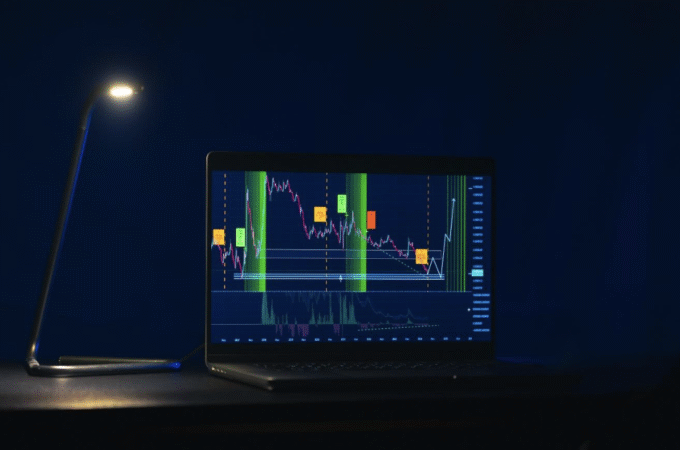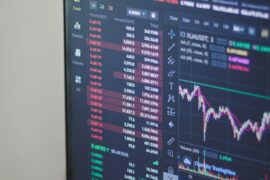This article may contain references to products or services from one or more of our advertisers or partners. We may receive compensation when you click on links to those products or services. Nonetheless, our opinions are our own.
The information presented in this article is accurate to the best of our knowledge at the time of publication. However, information is subject to change, and no guarantees are made about the continued accuracy or completeness of this content after its publication date.
Cryptocurrencies are a class of digital assets that, regardless of the numerous speculations of their ephemeral nature and status as fads that will eventually fade away, are here to stay alongside physical money. A future of prosperity is foreseen for cryptocurrencies due to their decentralized, transparent, and consensus-based development model, reshaping traditional financial and technological infrastructure into a more accessible system, built for superior security and robust resilience.
Nonetheless, cryptocurrencies have also attracted a reputation as uncertain investments, reminding enthusiasts that there is no guarantee of success in such a volatile space. As risks of runs and contagion are omnipresent, alongside episodes of instability, crypto is far from being a “set it and forget it” type of investment, requiring constant learning and heightened caution. For instance, when you’re interested in a particular coin, such as Cardano (ADA), one day you may encounter a favorable ADA price prediction, only for the next day to witness a massive market downturn. Such events underscore the interconnectedness and opacity of crypto markets, which, although they promote transparency, make it very hard to see what is happening behind the scenes and what will happen as time passes.
The good news, however, is that with the right approach, crypto enthusiasts can enhance decision-making, improve their trading outcomes, and ultimately realize that the fast-paced world of cryptocurrency is not entirely an enigma. This article aims to discuss a few of the most relevant cryptocurrency trading strategies, so keep reading.

How To Properly Evaluate Cryptocurrency Projects?
Determining a crypto’s credibility is a crucial step, and comes before deciding whether you should invest or trade an asset. Make sure the cryptocurrency you’re researching includes realistic token/coin objectives, reliable team members/partnerships, and a white paper. Remember that spelling and grammatical errors shall also be considered a good reason to inquire about the project’s trustworthiness and perform thorough research on the aspects mentioned above.
For instance, a project’s whitepaper is an informational document that defines its purpose, objectives, and technology. Thus, a real white paper should never sound like a marketing brochure, as it must include technical, well-cited explanations of how the protocol works. As for the development team, it’s important to remember that legitimate projects will never pass over providing additional information about members’ previous experience and particular blockchain expertise. A network assembled by individuals who have already been part of other successful cryptocurrencies demonstrates a higher degree of trustworthiness beforehand.
Voted "Best Overall Budgeting App" by Forbes and WSJ
Monarch Money helps you budget, track spending, set goals, and plan your financial future—all in one app.
Get 50% OFF your first year with code MONARCHVIP
Pulling The Market Metrics
Although it would be far from professional to judge cryptocurrencies by market cap alone, the total value of a particular asset calculated at current market prices (MCAP) provides a bigger picture view for investors, helping them evaluate stability, risk, and potential growth. To calculate the market cap of a cryptocurrency, you have to assess the total number of coins issued, and then multiply the asset price by it. You could also choose the easy path, which is to use automatic calculations from professional websites that display crypto market statistics and analytics.
To determine the status and potential profitability of a particular asset, you can use market capitalization in combination with other indicators, such as the trading volume, number of swipes, and watchlist metrics. Successful trading is built upon understanding that the price is not the one forming volume behavior. For that reason, volume behavior suggests how much of an asset is being traded over time, forming independently of the price and often preceding it. In short, assessing the volume of an asset reveals trader intent or market interest before the price does.
Setting Clear Entry And Exit Points
Entry and exit points are typically what shifts the vastness of trading cryptocurrencies into a straightforward process, reducing emotional decision-making and other vulnerabilities that may overall jeopardize the trading plan.
Usually, to find the right entry point, traders consider the following indicators:
- Moving Averages (Mas) are probably the simplest yet most potent means of sizing trend directions. This statistical calculation filters short-term fluctuations and noise in the market, helping traders make sense of the ever-changing cryptocurrency markets and identify potential entry points.
- The Relative Strength Index (RSI) generally confirms whether a trend has enough momentum, suggesting when an asset might be overbought or when you should wait rather than enter the market and buy at the peak.
- The Parabolic Stop-and-Reverse (SAR) determines an asset’s price prediction, generating bullish and bearish signals according to the dots’ position relative to the asset’s price. Bullish reversals are typically recognized when the dots flip from above to below the price, suggesting it may be the right time to join a rising trend.
As for establishing a clear exit point, the following strategies are the most common ones:
- Trailing Stop-Loss is a risk management tool that automatically follows positive market movement, helping protect gains in fast-shifting markets. With a trailing stop limit, you can decide on the maximum possible loss without limiting the maximum potential gain, navigating the volatile crypto landscape with more confidence.
- Moving Averages are not solely a viable way to secure favorable entry points: they’re also helpful for setting exit points.
- Fibonacci Retracement Levels are a highly effective way to identify potential reversal points and predict how far a price might pull back before reopening its trend.
Concluding Remarks
In a world where we have become so preoccupied with making a profit, breaking ourselves to make it even more successful, it can be quite challenging to resist the urge to chase quick profits. But you must master the art of patience, and you have to constantly push yourself to develop a more disciplined personality if you want to have a chance in the world of day trading. Otherwise, emotions will rule, and when emotions like nervousness, conviction, fear, greed, and overconfidence rule, it is just a matter of time until devastating financial losses arise.
Trade with ice-cold calculation and consistency.

Reviewed and edited by Albert Fang.
See a typo or want to suggest an edit/revision to the content? Use the contact us form to provide feedback.
At FangWallet, we value editorial integrity and open collaboration in curating quality content for readers to enjoy. Much appreciated for the assist.
Did you like our article and find it insightful? We encourage sharing the article link with family and friends to benefit as well - better yet, sharing on social media. Thank you for the support! 🍉
Article Title: A Beginner’s Guide To Trading Cryptocurrency, The Most Disruptive Technology Of Our Century
https://fangwallet.com/2025/06/10/a-beginners-guide-to-trading-cryptocurrency-the-most-disruptive-technology-of-our-century/The FangWallet Promise
FangWallet is an editorially independent resource - founded on breaking down challenging financial concepts for anyone to understand since 2014. While we adhere to editorial integrity, note that this post may contain references to products from our partners.
The FangWallet promise is always to have your best interest in mind and be transparent and honest about the financial picture.
Become an Insider

Subscribe to get a free daily budget planner printable to help get your money on track!
Make passive money the right way. No spam.
Editorial Disclaimer: The editorial content on this page is not provided by any of the companies mentioned. The opinions expressed here are the author's alone.
The content of this website is for informational purposes only and does not represent investment advice, or an offer or solicitation to buy or sell any security, investment, or product. Investors are encouraged to do their own due diligence, and, if necessary, consult professional advising before making any investment decisions. Investing involves a high degree of risk, and financial losses may occur including the potential loss of principal.
Source Citation References:
+ Inspo
There are no additional citations or references to note for this article at this time.












































